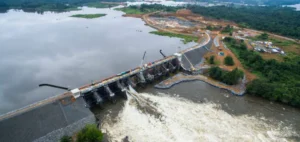Scatec ASA has announced the completion of the sale of its 51% stake in an African hydropower project to TotalEnergies for a total of USD 167 million. The deal was finalised on February 28, 2025, with a valuation based on a reference date of December 31, 2023. The net proceeds from the sale are estimated at USD 161 million, adjusted for cash flows between the valuation date and the closing date. These funds will be used to support Scatec’s self-financed growth plan and to repay company-level debt.
The assets involved in the transaction
The deal includes several strategic assets, notably the 255 MW Bujagali hydropower plant in Uganda, as well as a developing portfolio comprising the 361 MW Mpatamanga plant in Malawi and the 206 MW Ruzizi III project located on the border between Rwanda, the Democratic Republic of the Congo (DRC), and Burundi. As part of the transaction, the team responsible for hydropower activities in Africa will be transferred to TotalEnergies under a new entity called SN Power AS.
A sale in line with Scatec’s strategy
Scatec’s CEO, Terje Pilskog, expressed his satisfaction with the conclusion of the sale, emphasising that the transaction is in line with the company’s strategy to optimise its portfolio. “The divestment is part of our strategy to focus our investments primarily on core markets, with a particular focus on solar, onshore wind, and battery energy storage,” he said. Pilskog also thanked Scatec’s teams involved in the hydropower projects, who will now continue their work within TotalEnergies.
Accounting impact of the transaction
The proportional accounting impact of the transaction is estimated at around USD 30 million, with a consolidated impact of about USD 50 million, mainly due to currency fluctuations. These adjustments will be reflected in Scatec’s financial results for the first quarter of 2025.






















